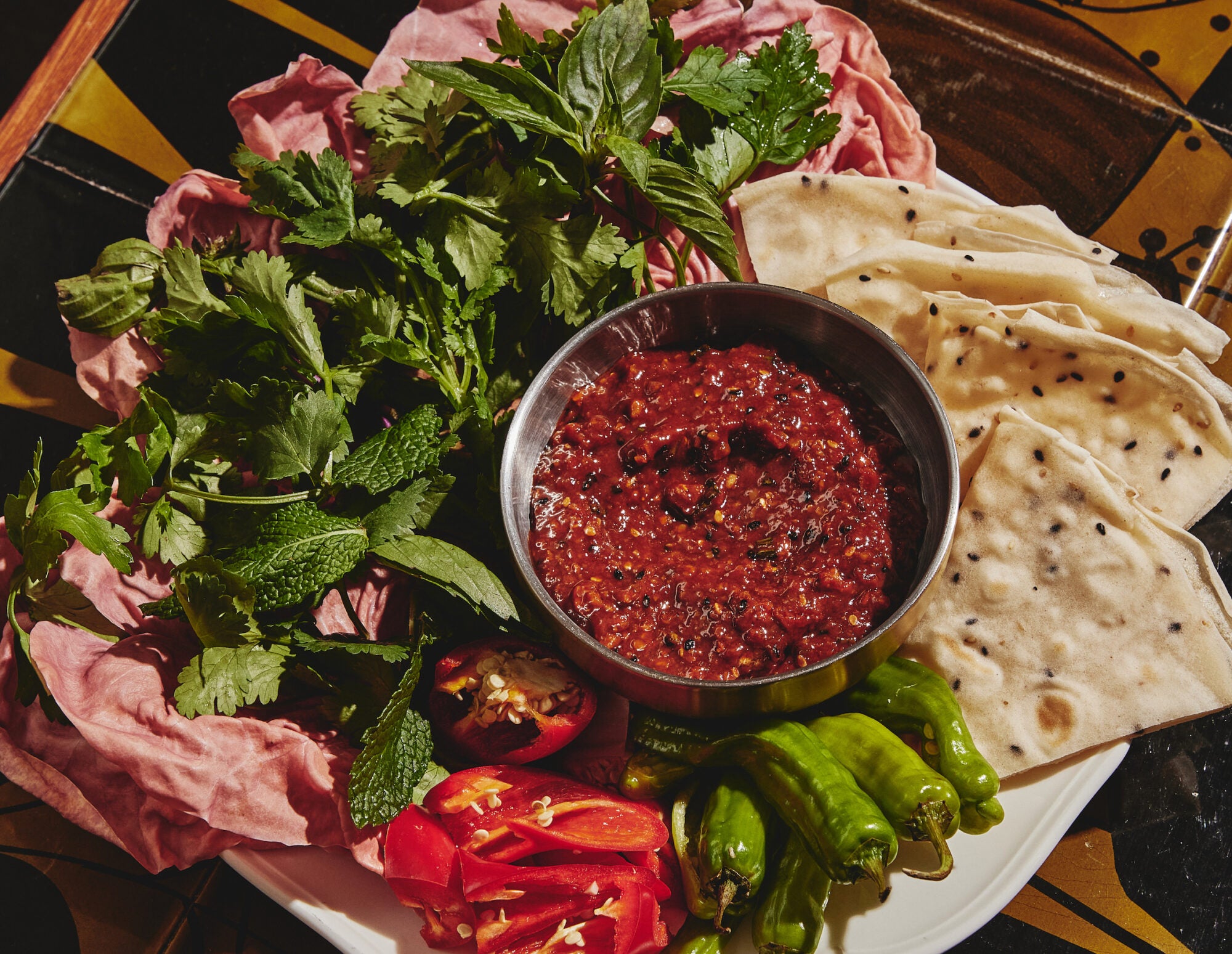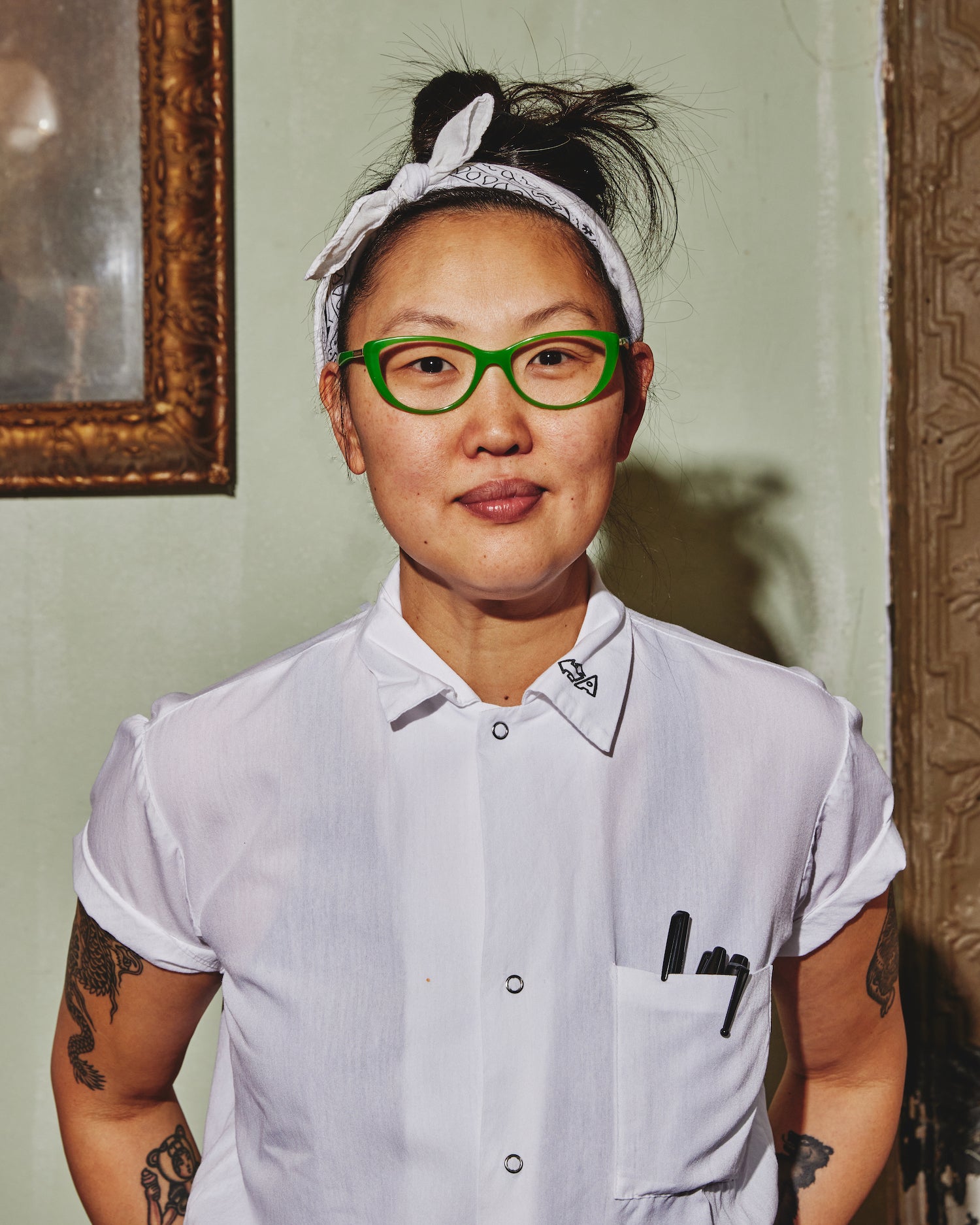
An adopted chef questions the building blocks of her critically acclaimed palate.
When I was a child, probably no more than seven or eight years old, my mother and I went to an unassuming Mexican restaurant on a stretch of local highway near our house in rural Rhode Island. There was nothing remarkable about this restaurant, and I don’t recall why we were there, but I have a searing memory of the complimentary bowl of salsa that was placed before us alongside a plastic, wax paper–lined basket of corn tortilla chips.
The first bite was bracing—cold, salty, tart, crunchy—and then came a tingling, burning sensation I had never felt before. Slowly, it crept over my tongue and danced onto my lips; with every subsequent bite, the sting of the salsa became more and more intense, until I was panting like an overheated dog in summer, beads of sweat forming along my hairline and on the tip of my nose, tears welling up in my eyes. My mother panicked and, with a look of concern, asked if I was alright and suggested I stop eating the assaulting food. I replied through sniffles and frenetic open-mouth breathing, “No, no, I’m okay . . . I can’t stop, it’s so good!”
This was the first experience I can remember of food really making me feel something. My tastebuds tingled with the sensation of that salsa (which I assume was laced with a healthy amount of serrano or jalapeño chiles); a feeling that teetered on painful but was ultimately profoundly pleasurable. My mother’s retelling of this story has always served to paint a colorful picture of my budding predilection for spicy food, but as I began to develop my own palate, and as my interest in food and flavors grew, I kept returning to that moment as a sort of epiphany about the trio of salt, acid, and spice, and how they could work together to create balance and fireworks at the same time.
Was this childish lust for salsa a reactivation of some long-dormant receptor in my taste buds, or was it simply that I had broken new ground, gastronomically speaking, and found this fresh territory to my liking?
This on its own is perhaps not revelatory (there is, of course, a whole book and show devoted to the powers of salt, fat, acid, and heat), and in fact might simply be considered foundational to good, balanced food. It would also be easy to discount this moment as nothing more than the ethnocentric notion that someone of Korean descent would have an inherently high spice tolerance. But for me, this discovery felt important in a very personal way.
I was born in Korea—the exact day and year is unknown, but it was around 1979 or 1980—and raised for the first two years of my life in an orphanage, most likely in Seoul. The years prior to my adoption and arrival in America, along with my first experiences of food, are lost to memory. With no reference point when trying to decipher the origins of my tastes, discovering this draw to spice felt like a tiny clue in helping to solve the puzzle of me: how much (if any) of my palate is innate, and how much is a product of outside influence? Was this childish lust for salsa a reactivation of some long-dormant receptor in my taste buds, or was it simply that I had broken new ground, gastronomically speaking, and found this fresh territory to my liking?

Korean food contains multitudes, and I am undoubtedly still but a student of its many facets, but to me, much of what makes it distinct is fermentation. From the many varieties of kimchi—napa cabbage, radish, and cucumber, to name a few—to the foundational jangs, like gochujang and doenjang, made from fermented soybean, there is something profoundly earthy and alive about Korean food. Did the salsa jostle something deep in my genetic coding that was familiar in a way I wouldn’t realize until many years later? Or was I just lucky to have had the opportunity to eat things that forced my palate to acknowledge new and challenging flavors? If I’d never tasted that salsa, would it have been years before I experienced something similar, and would I have liked it as much? Curious to know if I was programmed before consciousness to like or dislike certain flavors, tastes, and textures, I spoke to someone with a similar background to compare notes.
The person I asked was my friend Evan, someone I’ve known both professionally and personally for almost four years. We met while working at a restaurant here in New York City, and we are both Korean adoptees raised by white families in rural America who found our way to careers in kitchens. But while my youth was spent in coastal New England, Evan’s was spent in the Kentucky suburbs.
He and I had similar paths to finding ourselves through Asian food once we left our small hometowns for bigger-city living. Where we diverged is that Evan couldn’t recall having any natural callings or cravings for spicy, funky foods until he was older and discovered them out of his own curiosity. He did, however, reveal that he’s always been a huge rice and noodle lover, consuming more spaghetti as an adolescent than would be considered healthy by the USDA. In this, we are like two Korean adoptee peas in a pod; me being the unofficial spaghetti queen of Little Compton, Rhode Island, according to my late grandpa John.
If I were to poll a wide sample, I’m certain I would find other adoptees with similar stories to mine, as well as those with experiences more like Evan’s. In the end, we humans are naturally inclined to likes and dislikes for no rhyme or reason. My palate may have developed differently had I been raised by different parents in a different geographic location—or perhaps it would be exactly the same. What I do know is that while my upbringing, both geographically and culturally, was far from my origins, the path to finding my palate is intrinsically linked to a world whose secrets have been whispered in my ear and my stomach since that fateful day.
